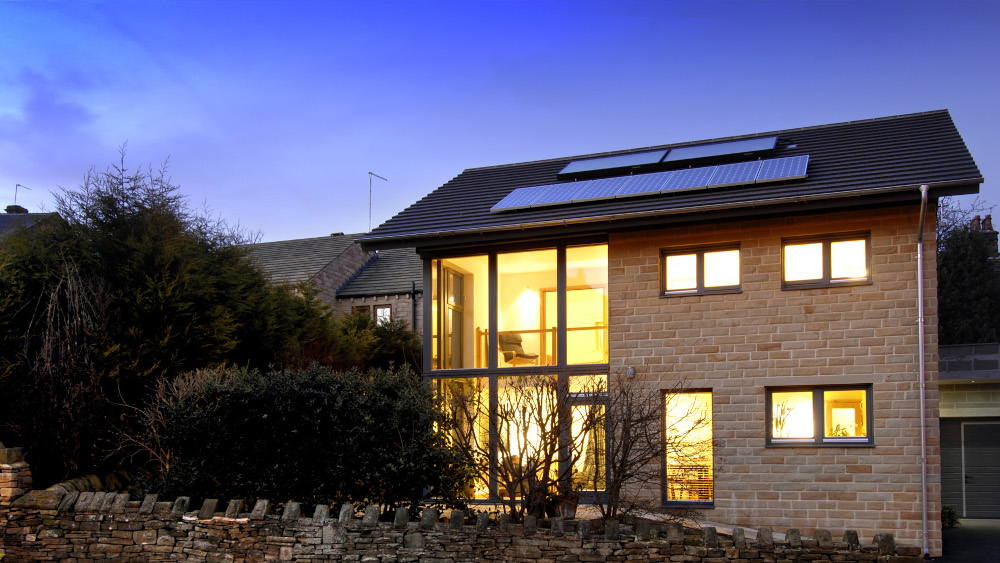While energy efficient homes are gaining in popularity, many homeowners still wonder what they actually entail. Expert in the creation of high-performing, energy-efficient homes, Andy Mitchell, Managing Director at 21°, demystifies the concept. Good planning means you can secure the benefits and the best features that make these properties low energy, comfortable, healthy and sustainable.
Through practical elements like airtightness, thermal insulation, and efficient ventilation, Andy explains how energy-efficient homes are far more accessible than many people realise.
Core components of an energy-efficient home
An energy-efficient home comprises three main pillars – minimal air leakage, effective ventilation, and a thermally-efficient core building shell (wall, roof, floor, windows, and doors) and connections between them. All of these elements must work together in synergy for optimal results.
In fact, these ‘optimal results’ provide a level of health and comfort that often far exceed what most people have experienced. It’s therefore essential these components are carefully considered as a whole system, rather than being viewed in silo, to guarantee their overall effectiveness.
For example, installing thermally-efficient windows and doors is not enough to foster a comfortable indoor temperature if there is uncontrolled air movement throughout the house.
Airtightness
Airtightness is crucial in preventing uncontrolled air leakage, which can lead to energy loss and increased heating costs. Airtightness is often overlooked, yet accounts for approximately 30-40% of a home’s heat loss. An airtight home helps to maintain a stable indoor temperature and improves energy efficiency.
From tapes and membranes to advanced sealing solutions, airtightness products are essential for creating a well-sealed building envelope.
These solutions should also extend to products such as windows and doors – where not only the frame is well-sealed to the building, but the opening element has gaskets that ensure an airtight seal when shut. Class 4 (BS EN 12207) is the best grade of airtightness for windows and doors These products prevent air leakage which can typically account for as much as a third of a home’s heat loss.
Ventilation
Effective ventilation is essential for maintaining indoor air quality and comfort while also being energy-efficient. Although making our homes airtight is key to improving efficiency, some air changes are still required to stop the moisture buildup. If this is not done correctly it can lead to mould and dust mite issues, as well as the accumulation of other toxic gases such as VOCs.
Mechanical ventilation with heat recovery (MVHR) systems are engineered to provide continuous fresh air while recovering heat from exhaust air, maintaining a comfortable indoor environment and alleviating the need for additional heating, further reducing energy consumption.
MVHR systems provide optimal ventilation, ensuring properties remain fresh and healthy – without compromising on energy efficiency.
For example, in addition to providing triple-glazed windows and doors, we designed and supplied the MVHR system in a new build Passivhaus home project, utilising a Zehnder ComfoAir Q MVHR unit with rigid steel ducting.
For this project 21° worked with oak frame specialists, Oakwrights (also a NaCSBA member), to develop an MVHR system that would work alongside the encapsulation system. The client cited the quality of the products and the precise installation as being “crucial for the airtightness of the project, ultimately contributing to the Passivhaus certification”.
Thermal efficiency
The thermal efficiency of the building elements is integral to overall energy efficiency, reducing the need for artificial heating and cooling by maintaining a consistent indoor temperature. High-quality insulation materials and solutions ensure every part of the home, from walls and the roof to floors and the foundation, is well-insulated.
High-performance doors and triple-glazed windows are also an essential factor in a properly insulated property, as they’re designed to minimise heat transfer and ensure warm air stays in during the winter and out during the summer. Windows and doors should also contribute to the overall airtightness of the home, furthering energy efficiency.
A whole house retrofit in Cambridgeshire springs to mind in highlighting the role of windows and doors as part of wider thermal performance considerations. Here, our client chose inward opening windows, a lift and slide door, a fold-aside door, and two entrance doors (styles PA2 and GR1) from the GBS78 triple glazed timber range. The result was a comfortable, sustainable home that came as near as possible to Passivhaus standards.
Achieving exceptional energy efficiency with integrated solutions
At 21°, we believe that energy-efficient homes are not just for the eco-conscious few, but for everyone. By combining high-performance products with the right specifications and integration, homeowners can achieve remarkable energy savings, improved comfort, and a healthier living environment. Whether building a new property or retrofitting an existing one, solutions are available to meet the highest standards of energy efficiency and sustainability.
Energy-efficient homes are characterised by airtightness, thermally efficient building elements, and efficient ventilation, all working together to create a comfortable, healthy, and sustainable living space.
Through advanced construction techniques and technologies, energy-efficient homes are becoming more practical and accessible to all. As an industry leader, we are committed to advancing the knowledge and application of these solutions, helping to build a more sustainable future for all.
MEMBER UPDATE




